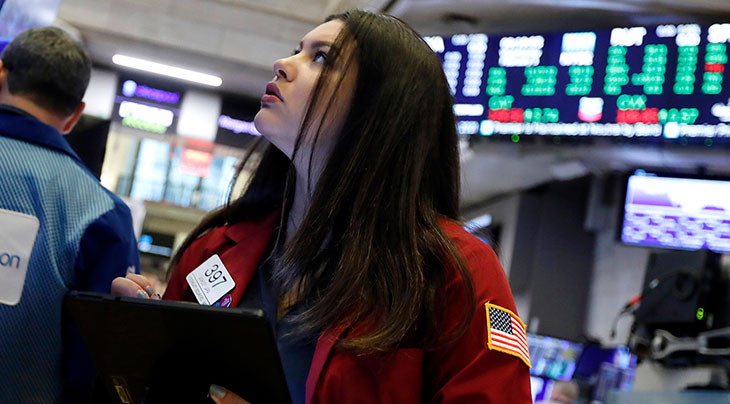This article previously appeared on News@Northeastern. It was written by Kaitlyn Budion.
The stock market has had a tumultuous week, reacting to financial uncertainty caused by the COVID-19 pandemic, but Yakov Bart, associate professor of marketing at Northeastern, says the key to getting through is to not panic. His advice for investors: Stay calm and keep a diverse portfolio.
“Try to keep emotions out of your decisions,” he says. “Plan in advance. Historically, research shows that investors who stop to diversify, perform the best.”

Diversification means making sure your portfolio has varied investments, Bart says, so he recommends investing in stocks and bonds; in different industries; large companies and small companies—in short, never putting all of your eggs in one basket. For example, invest 50 percent in stocks and 50 percent in bonds. The value of bonds usually increases when the value of stocks fall, so if an investor is invested in both, the total portfolio doesn't lose value.
And, while it can be easy to feel like you have to watch the market every minute, Bart says the best policy is not to obsess your stocks every minute of every day.
He recommends setting a schedule for when to check your investments, but only adjust to maintain a diverse portfolio, because watching it constantly is just going to stress you out.
“It's essentially going to Six Flags, except Six Flags is safer because you can't make decisions that put your retirement in danger,” Bart says.
He adds that investors shouldn't feel they have to sell unless they need the money to cover their living expenses. Otherwise, if they sell now, they lose the opportunity to benefit when the market inevitably recovers.
On Monday, the S&P 500 fell nearly 8 percent and the Dow Jones Industrial average fell more than 2,000 points, making it the Dow's worst one-day decline since December 2008. The sell-off was so steep Monday morning that it triggered a 15-minute stop to all trading, for the first time since the “circuit breakers” were put in place in 2013.
The market recovered slightly on Tuesday, but fell again Wednesday after the World Health Organization designated COVID-19 a pandemic. The Dow fell 1,464.94 points Wednesday, a 20.3 percent drop since the high reached on Feb. 12, making it a bear market. A bear market is a 20 percent or more drop from the highest point.
The markets continued to fall Thursday, after President Trump announced Wednesday night a 30-day travel ban from European countries in response to the pandemic. Stocks fell so fast Thursday morning that it triggered another circuit breaker, halting trading. The Dow dropped almost 2,353 points Thursday, its worst day since “Black Monday” in 1987.
And on Friday? It shot back 1,985 points.
As for concerns that the volatility in the market could drag the US into a recession? Bart says there's no way to tell now.
“I can come up with tons of reasons in hindsight, why the market did what it did, but typically these explanations don't allow you to predict what the market will do,” he says.
